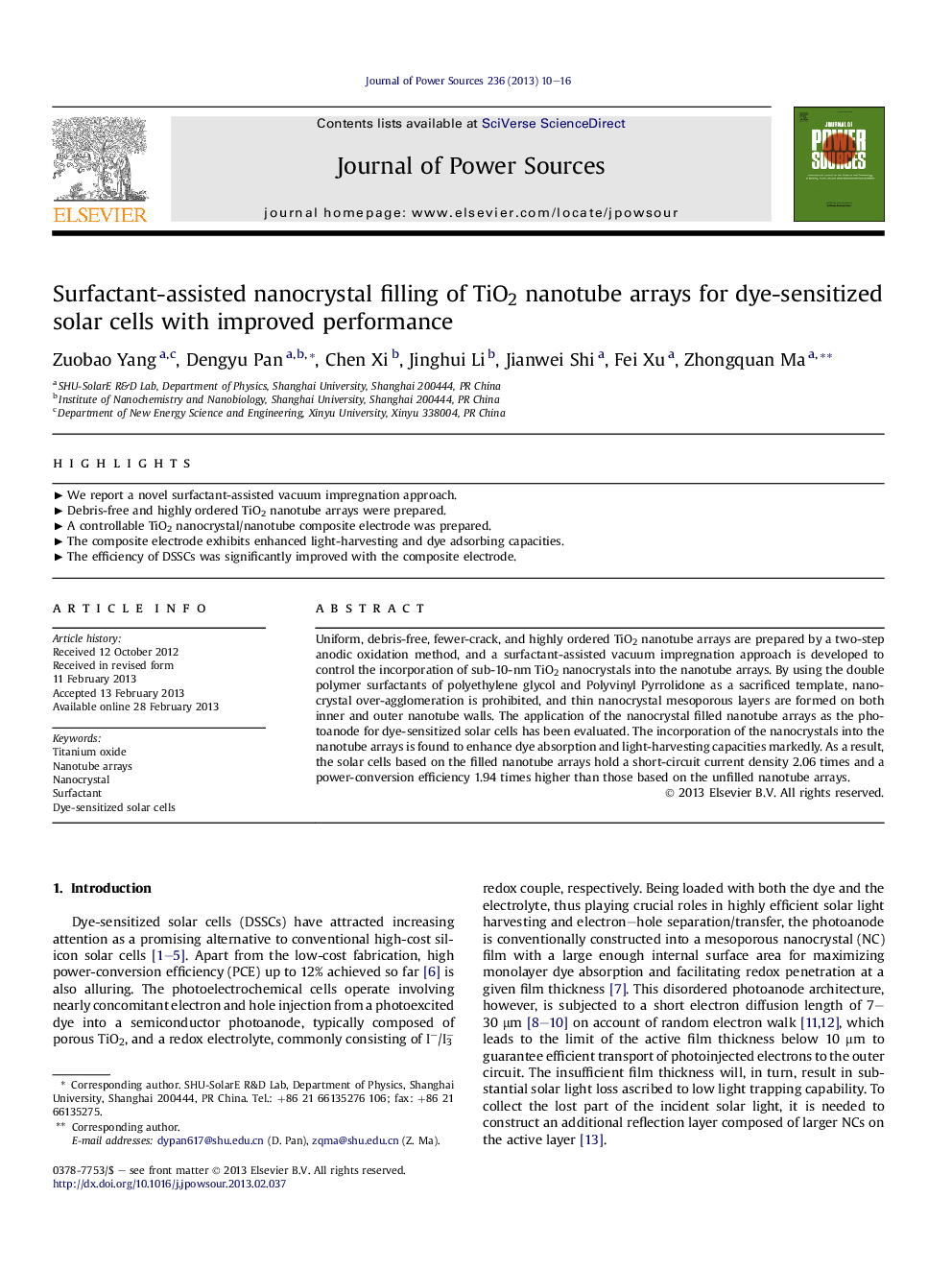| Article ID | Journal | Published Year | Pages | File Type |
|---|---|---|---|---|
| 1287831 | Journal of Power Sources | 2013 | 7 Pages |
Uniform, debris-free, fewer-crack, and highly ordered TiO2 nanotube arrays are prepared by a two-step anodic oxidation method, and a surfactant-assisted vacuum impregnation approach is developed to control the incorporation of sub-10-nm TiO2 nanocrystals into the nanotube arrays. By using the double polymer surfactants of polyethylene glycol and Polyvinyl Pyrrolidone as a sacrificed template, nanocrystal over-agglomeration is prohibited, and thin nanocrystal mesoporous layers are formed on both inner and outer nanotube walls. The application of the nanocrystal filled nanotube arrays as the photoanode for dye-sensitized solar cells has been evaluated. The incorporation of the nanocrystals into the nanotube arrays is found to enhance dye absorption and light-harvesting capacities markedly. As a result, the solar cells based on the filled nanotube arrays hold a short-circuit current density 2.06 times and a power-conversion efficiency 1.94 times higher than those based on the unfilled nanotube arrays.
► We report a novel surfactant-assisted vacuum impregnation approach. ► Debris-free and highly ordered TiO2 nanotube arrays were prepared. ► A controllable TiO2 nanocrystal/nanotube composite electrode was prepared. ► The composite electrode exhibits enhanced light-harvesting and dye adsorbing capacities. ► The efficiency of DSSCs was significantly improved with the composite electrode.
